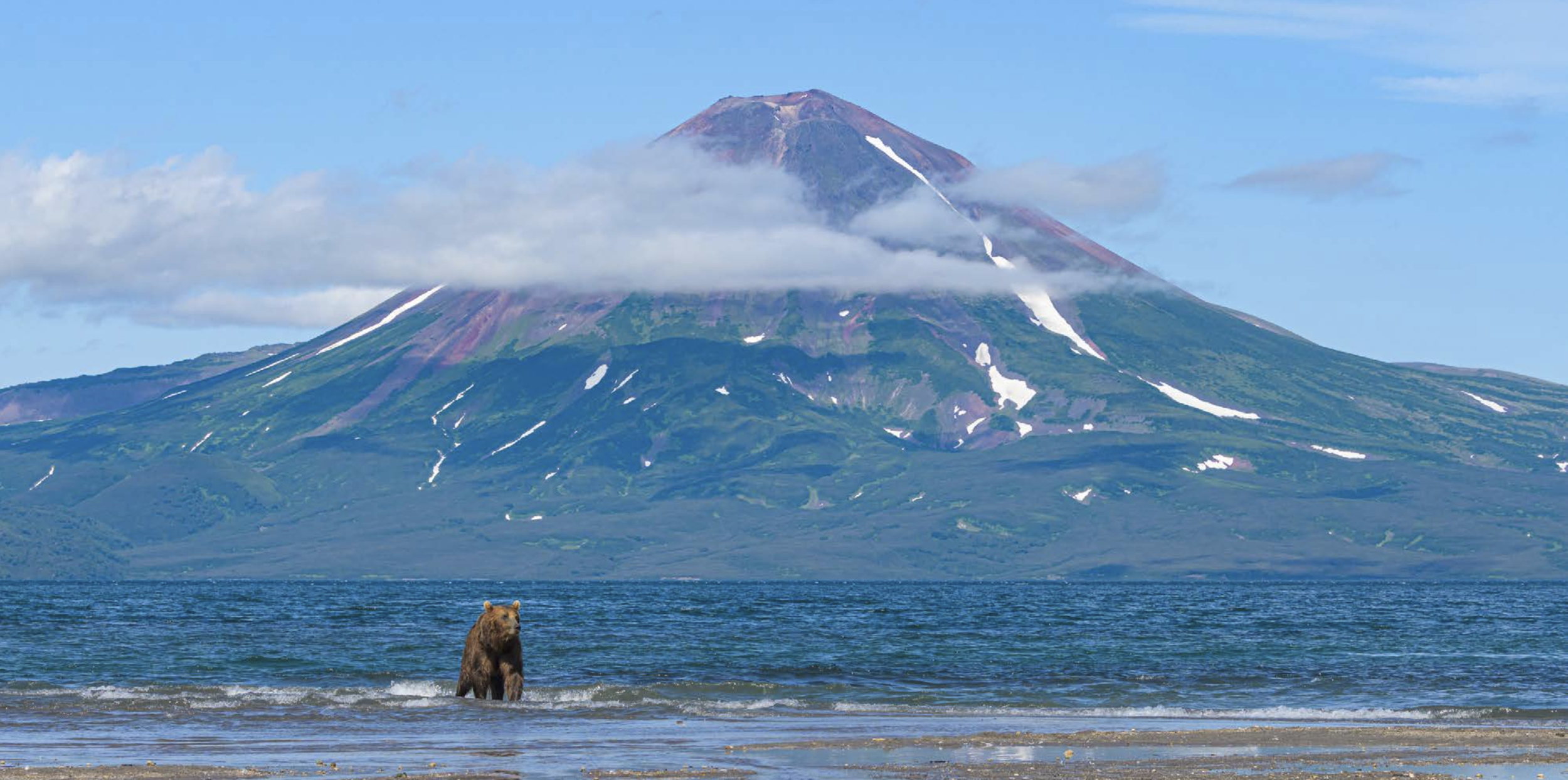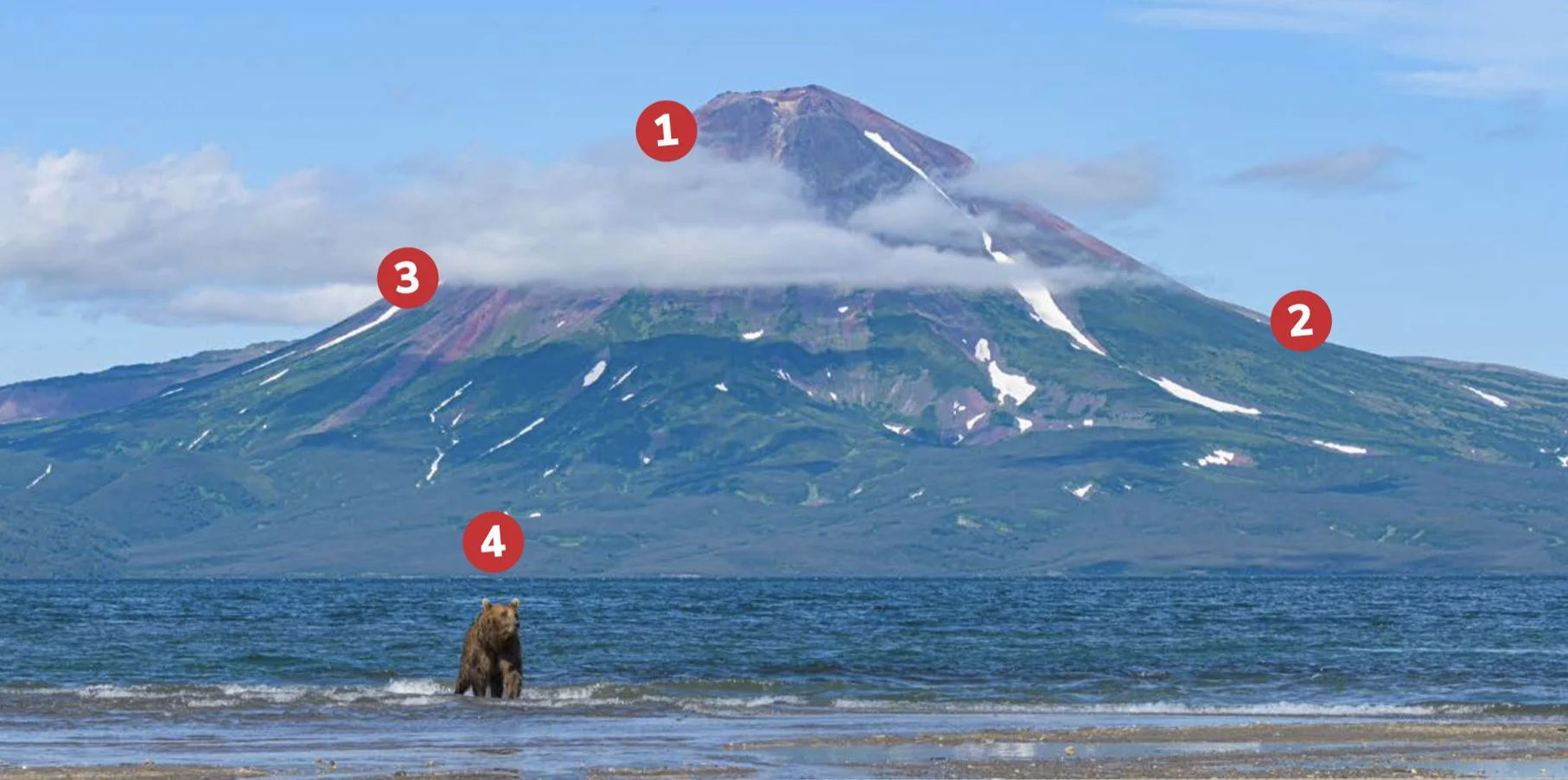Kamchatka Brown Bear By Kevin Lisota
RESEARCH CONDUCTED BEFORE WILDLIFE ENCOUNTER
Bears are typically solitary animals, but for coastal bears, salmon spawning runs can bring large groups of bears together to pluck salmon out of the river. Brooks River in Alaska’s Katmai National Park is one such destination, as is Kurile Lake on Russia’s Kamchatka Peninsula.
At Kurile Lake, millions of sockeye salmon return to the lake from the Pacific Ocean to spawn each summer. When the salmon return for spawning, hundreds of Kamchatka brown bears congregate at the lake for easy fishing.
Timing is critical for viewing the bears at Kurile Lake. Salmon spawning generally occurs from mid-July to the beginning of September, so it is a reasonably short window when these bears gather together.
Transportation and logistics in Kamchatka are difficult. Kurile Lake is only reachable via helicopter or a long drive in a gigantic off-road vehicle. Because of this, it was essential to use a reputable tour operator to handle details such as transportation and obtaining the required permits.
Before the trip, I immersed myself in online photos and videos of bears at this location. From this, I created a list of the types of photos I wanted to capture, including fishing, bear-to-bear interactions, and fights, along with environmental shots.
WILDLIFE ENCOUNTER
The number of bears and their activity at Kurile Lake was extremely high when we visited, with 25-30 bears at any given time, all day long, most within 10-50 yards (9-45 meters) of our viewing location. Some were fishing, some were resting, and some were fighting with each other. Given the abundance of food in the river, these bears were mostly oblivious to our presence. We also had two armed park rangers to ensure our safety if a bear were to take an interest in us.
Having this quantity of animals and animal activity is a luxury compared to most wildlife photography. There was no shortage of bear activity to photograph. Still, much of it did not show the stunning scenery of our location, particularly the nearly perfect volcanic cone of Ilyinsky Volcano. I wanted an image that showed that these bears were in Kamchatka, home to the highest concentration of volcanoes on earth.
I would wait for bears to walk in front of the volcano and snapped plenty of pictures with side profiles or bears walking away from me towards the volcano. Many bears were not in my desired placement relative to the volcano, and for safety reasons, we could not move from our shooting location to change the composition.
I have a series of images of this particular bear, some facing the side, some looking at the ground, but finally a couple of pictures facing towards me with both eyes visible and a nice posture.
TECHNICAL DETAILS:
Camera and Lens: Nikon Z7, Nikon 70-200mm ƒ2 .8E FL
Focal Length: 75mm
Aperture: ƒ9 to ensure that the landscape was sharp throughout the picture.
Shutter Speed: 1/1000th of a second was faster than necessary for the nearly stationary bear but fast enough to capture unexpected action.
ISO: 280 – This was a bright sunny day, so low ISO was adequate, and I let the camera meter decide this setting using Auto ISO.
Metering Mode – Matrix or evaluative metering is best when you are trying to properly expose the entire scene.
GLOBAL EDITS
• White balance adjustment for slightly warmer tones
• Add contrast with s-curve on tone curve
• Increase vibrance to highlight colors of volcano
• Remove chromatic aberration
• Enable lens profile corrections
• Panoramic crop to feature volcano slopes and remove featureless sky
• Minor noise reduction
LOCAL ADJUSTMENTS
• Graduated filter adjustment to volcano and sky adding texture and dehaze
• Graduated filter adjustment to water and bear boosting shadows
• Adjustment brush on the bear to boost shadows again
• Sharpen only bear and edges of volcano
CRITICAL DECISIONS IN THE MOMENT
1 Focus on the landscape – Sometimes, the most compelling wildlife photo is not focused on wildlife . Instead, it shows the landscape where the animals live and places them in the scene as another element . In this case, the volcano is a compelling landscape demonstrating the dramatic place where these bears live . I purposely ignored action shots closer to me in favor of this image .
2 Proper lens choice – Most of the day was spent with my 500mm lens capturing close-up shots of bears gorging on salmon . We were close enough to the bears that I needed something wider when they approached us, so I had my 70-200mm set up on a second camera . It was also precisely the right focal length to capture the sweeping cone of Ilyinsky Volcano .
3 Lighting – We spent multiple days at this location, and this day turned out better than the others because of the bright blue skies with some light clouds floating in front of the volcano. The next day, heavier clouds left the sky mostly grey and left little contrast and color on the volcano . Sunlight provided beautiful purplish color on the slopes and highlighted the last remaining pockets of snow .
4 Positioning – I photographed many bears in front of this volcano, but most were either not facing the correct direction or in a poor location relative to the volcano . The key to this composition is placing the bear midway along the volcano’s slopes . That provides a better balance with the peak of the volcano, which is in the center . I also wanted the bear’s posture and gaze pointed towards the crater of the volcano . Seeing the eyes of animals is critical, and it took many bears and many photographs to get one with a nice view of the face .
Shutter Speed – I shot this photo at 1/1000 second . There was plenty of sunlight, so ISO was not an issue . Honestly, the bear was moving slowly enough that I could have easily chosen a shutter speed that was much lower and still had the bear nice and sharp . However, I kept the shutter speed higher in case there was faster action, like if the bear decided to fish or fight.
Quality over quantity – This was an exhilarating experience . There were so many bears and so much bear activity that it was tempting to fire off thousands of frames of every bear we saw. However, I find it better to watch the animals for a bit, evaluate the scene and the backdrop, and understand their behaviors . Once you have their behaviors in mind, you can be far more selective in the scenes that you shoot .



